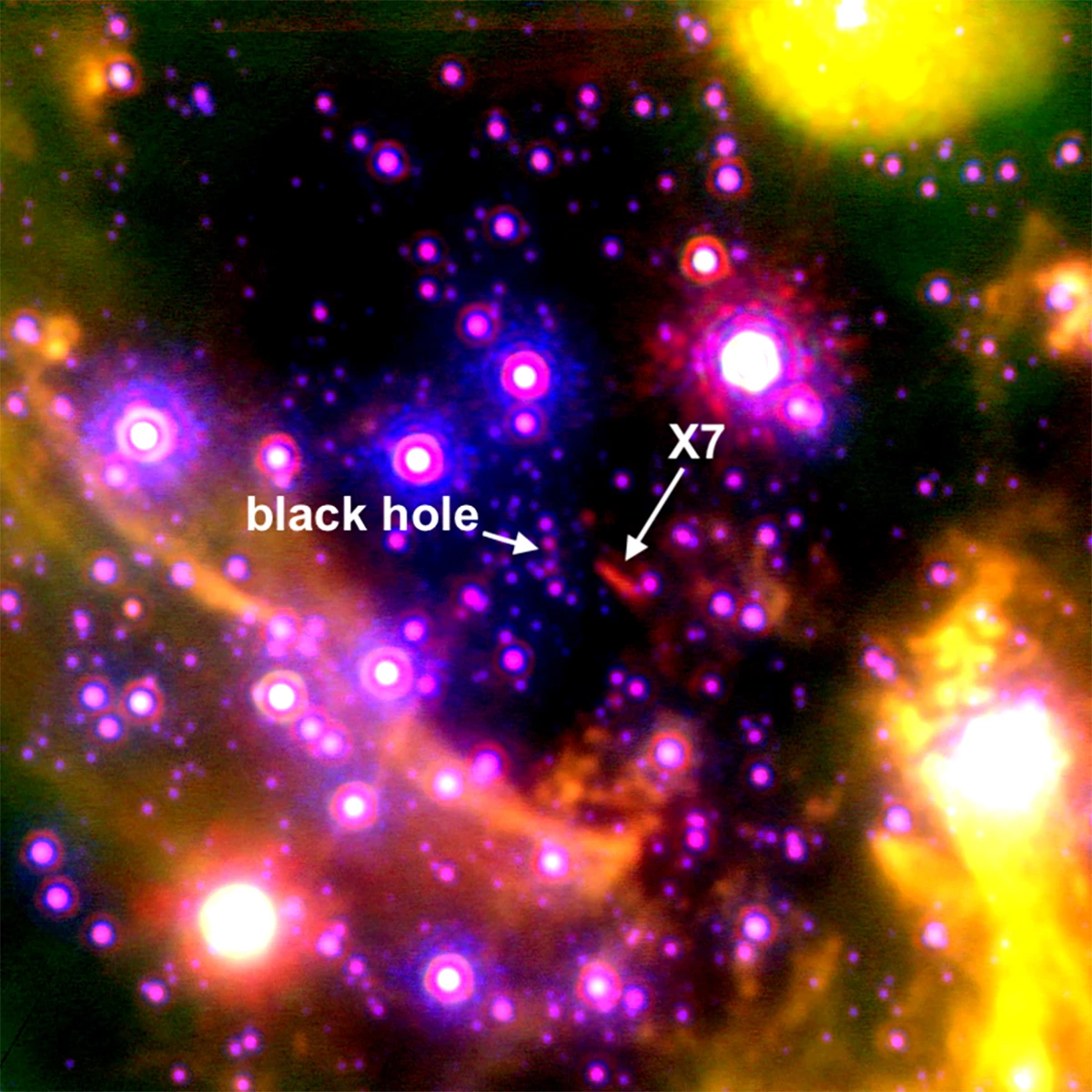Astronomers have been tracking a mysterious object near the center of the galaxy for decades, and now a new study has shed light on its identity – and its eventual fate in the coming years, when it will likely be slurped up by the supermassive black hole lurking there.
The center of the Milky Way constitutes the most extreme environment in the galaxy. That’s because it’s home to Sagittarius A* (Sgr A*), a supermassive black hole containing the mass of about four million Suns. That creates a huge gravitational influence on the stars and other objects in the area.
One such object is known as X7, which is estimated to contain the mass of about 50 Earths and be on a roughly 170-year orbit of Sgr A*. Although it’s been tracked for decades, astronomers haven’t been entirely sure what X7 actually is, so for the new study a team at UCLA Galactic Center Group and the Keck Observatory set out to find out.
The astronomers analyzed 20 years of data on X7, and found that it’s being stretched out over time, so that it’s now quite elongated. It’s also speeding up, so that it’s now traveling at around 700 miles (1,127 km) per second.
“No other object in this region has shown such an extreme evolution,” said Anna Ciurlo, lead author of the study. “It started off comet-shaped and people thought maybe it got that shape from stellar winds or jets of particles from the black hole. But as we followed it for 20 years we saw it becoming more elongated. Something must have put this cloud on its particular path with its particular orientation.”

Although all objects in the area tend to be stretched out in the intense gravity, X7 has undergone a far more dramatic shape change than the others. And this could be key to understanding its identity.
Another class of objects called G objects also appear to be clouds of dust, but when one made a close pass by Sgr A* in 2014 it lost less mass than was expected, indicating it had a denser core to it. That suggests it was a star wrapped in a dusty shroud – and X7 could be a new class of objects that’s just the dust, hold the star. The team proposes that this cloud of material could have been ejected after two stars collided.
So we know its recent past, but what’s in store for X7? According to the team’s calculations of its trajectory, X7 will make its closest approach to the supermassive black hole around the year 2036, and it’s unlikely to survive the encounter. Soon after that, it will be slurped up, never to return.
“We anticipate the strong tidal forces exerted by the galactic black hole will ultimately tear X7 apart before it completes even one orbit,” said Mark Morris, co-author of the study.
The research was published in The Astrophysical Journal.
Source: UCLA





